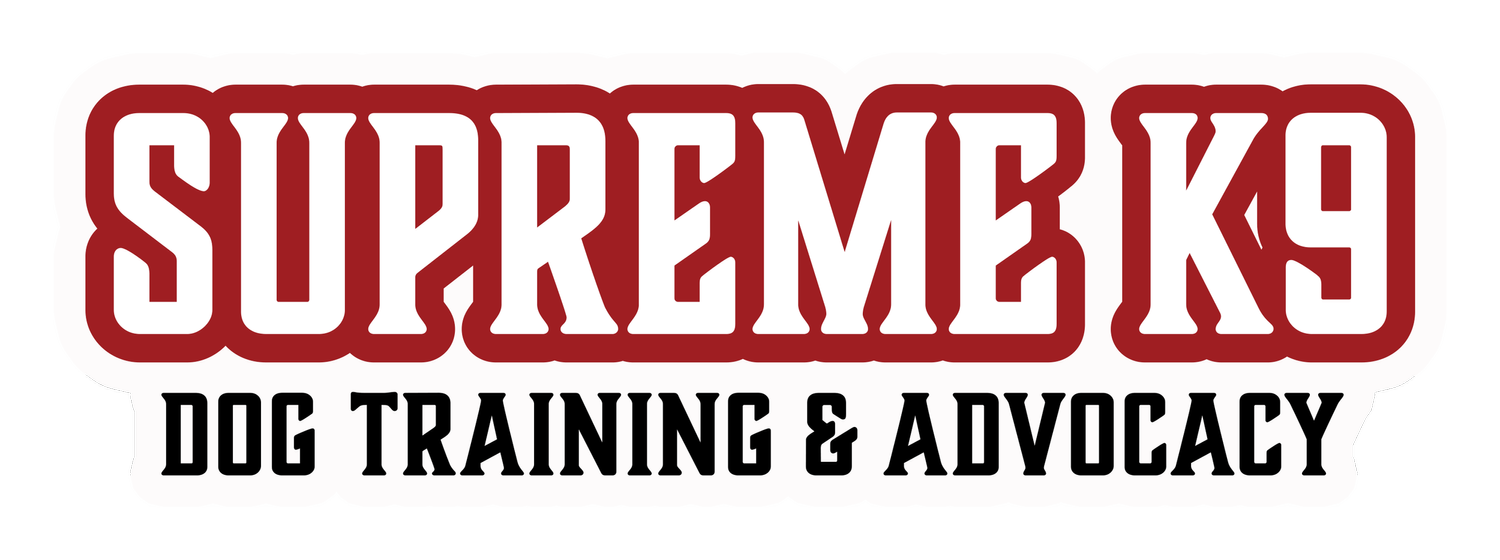Training FAQs
What is your training approach and methods?
We approach each dog/owner as unique and draw on our years of experience to determine what is optimal for the situation. The specific approach taken with any particular dog varies. While there are certainly commonalities and underlying principles, our training is not one-size-fits-all, and what works for one may not work for another.
The team is versed in the application of Classical Conditioning concepts as well as all quadrants of Operant Conditioning concepts, which are applicable in psychology of dogs and humans alike.
With puppies and when teaching any dog new behaviors the approach leans heavily towards positive reinforcement; but we are not ‘purely positive’ as that is a marketing term and not actually possible following a scientific definition. Simply put, we need to give our dogs a reason to do something, as well as a reason not to.
Rewards and aversives are based on the perception of the particular dog. For example one of the common aversives the team utilizes involves a burst of air -- many dogs find this to be sufficient, while other dogs have an entirely different reaction. On the other end of things, some dogs find food to be highly rewarding while others simply are not motivated by the notion.
Whether it’s Private Lessons or our popular Day School Program, a crucial part of our process is to impart knowledge to owners so they gain an understanding of the why in addition to the how.
What ‘types’ of dogs do you work with?
All!
We work with puppies and adults, teacups to giant breeds, happy-go-lucky pups as well as those that have been told they’re out of options.
We also commonly work with clients who haven’t found success elsewhere, and strive to help our clients achieve true, lasting changes.
What training tools do you use?
Along with adapting the specific approach based on the unique dog/owner/situation, the team is also versed in the usage of a variety of training “tools”. These include but are not limited to: prong collars, e-collars, flexi-leashes, long lines, muzzles, treats, and toys (and more). Playing with and giving affection can also be valuable in training, although not tools per se.
At the end of the day, a tool is just that, and the nuance is in skilled and knowledgeable application and usage.
We welcome dialogue and our approach isn’t one-size-fits-all, but we also ask our clients to come with open minds to receiving the information and instruction so that we can effectively help you achieve your goals.
Do I have to use the tools?
The better question is why you wouldn’t. If you’re trying to build a house, does it make sense to disallow the use of tools? When driving a car, would you intentionally not wear a seatbelt knowing that it could potentially be life-saving? Is it productive when seeking medical attention, to instruct your medical practitioner that you refuse to even consider certain options?
Tools are meant to be assistive, and are not a replacement for teaching. We ask that our clients keep an open mind to finding and using tool(s) that will help them achieve their training goals. We will always explain and demonstrate tools, and encourage owners to try anything on themselves to experience it first-hand.
It’s also important to acknowledge that tools can be misused so we encourage asking questions, having dialogue, understanding the why.
What about medication?
We require our clients to be off any psychotropic medication; owners need to be on board and committed to that, and depending on if there is a weaning process we would need to coordinate dates accordingly.
Our training approach seeks to address the underlying causes that manifest as “problem behaviors.” Some of the ways we do this are by building healthy relationships, establishing clear communication, increasing dogs’ confidence levels, teaching dogs more acceptable ways to handle uncomfortable situations, as well as teaching them what is and isn’t appropriate. A key piece is also teaching owners to advocate for their dogs!
Many commonly prescribed psychotropic medications (Prozac/fluoxetine, Xanax/alprazolam, Clomicalm/clomipramine, Zoloft/sertraline, Valium/diazepam, Paxil/paroxetine, etc) can produce side-effects that are indistinguishable from the “problem” behaviors including increased anxiety, aggressive behavior, agitation, and irritability. This can obscure or muddy the distinction between a dog’s true behavior and responses vs those influenced by medication and be counterproductive to training progress.
Do you have a warranty?
Dogs are intelligent, living, sentient beings — not a device that can be rebooted, reprogrammed, or “fixed” and they certainly don’t come with warranties or instruction manuals. Your relationship, like any other, will ebb and flow and have highs and lows.
We are here to help you and your dog on your journey together, but ultimately owners play one of the most critical roles in determining long-term outcomes which is why our approach emphasizes imparting knowledge and skills to you, your dog’s owner.
Our value is in our track-record and experience base in working with a broad range of dogs, ranging from puppies to challenging behavioral cases.
We will always strive to deliver a high-quality experience to our clients — professional, supportive, knowledgeable, transparent, and inclusive. Clients are always encouraged dialogue with us and share any feedback.
Will training change my dog’s personality?
Yes, but also no.
While our clients may rave of how transformative training with us has been for them (thank you — we remain incredibly flattered and humbled), the fact is that we cannot entirely change who a dog is. We aim to help dogs become the best versions of themselves, and our objective is to teach dogs and their owners the skillset to successfully navigate their lives, together.
